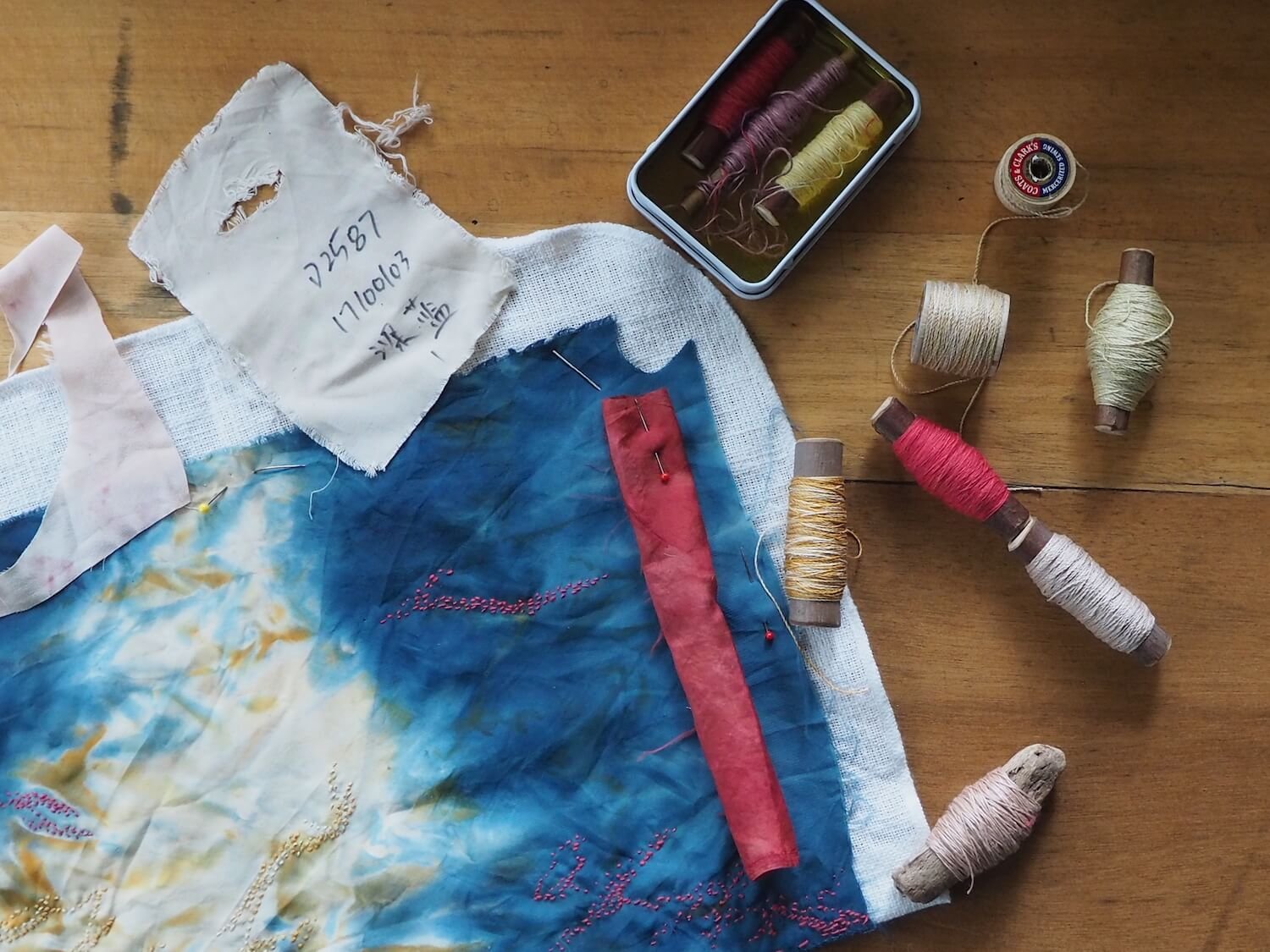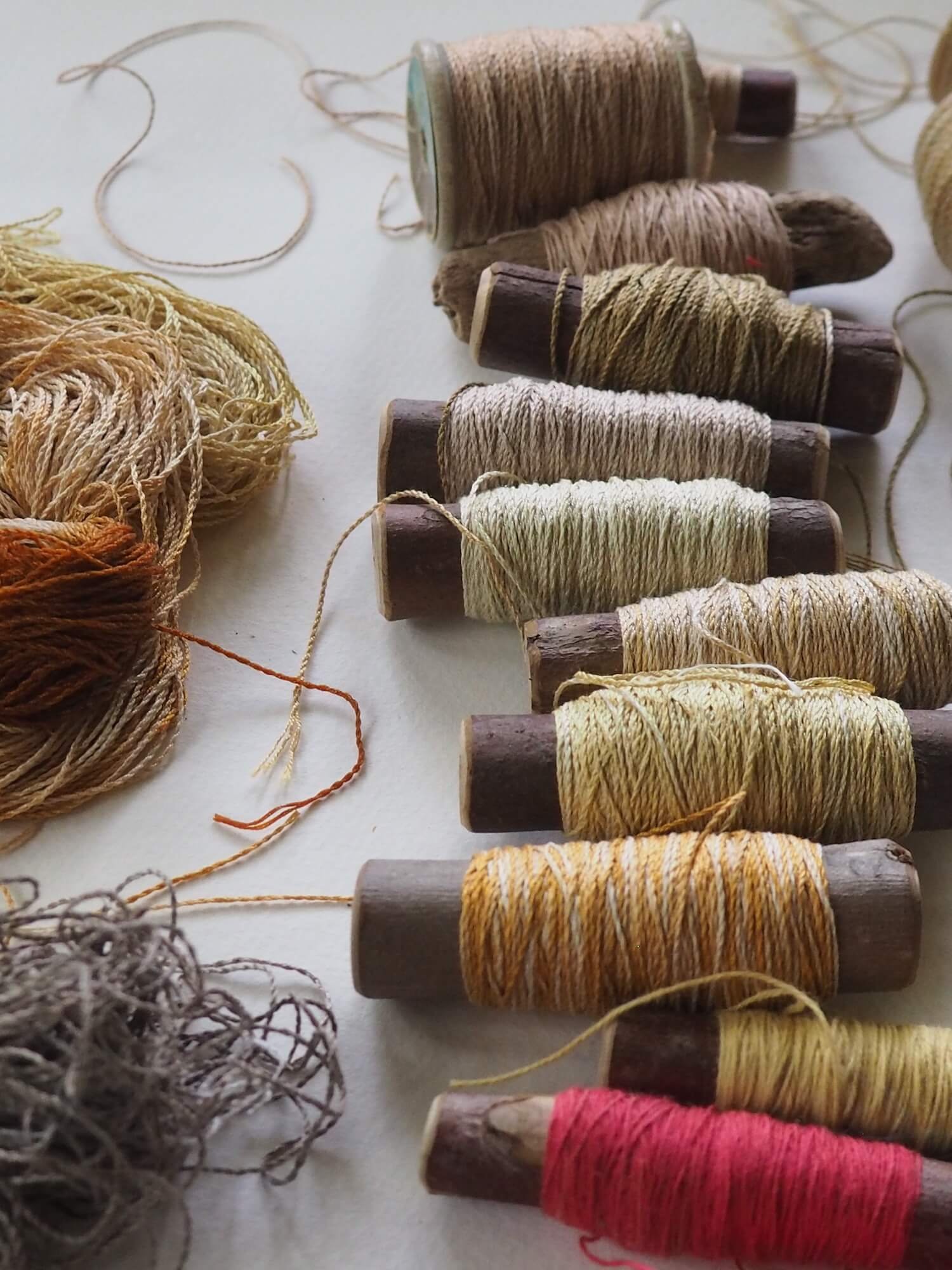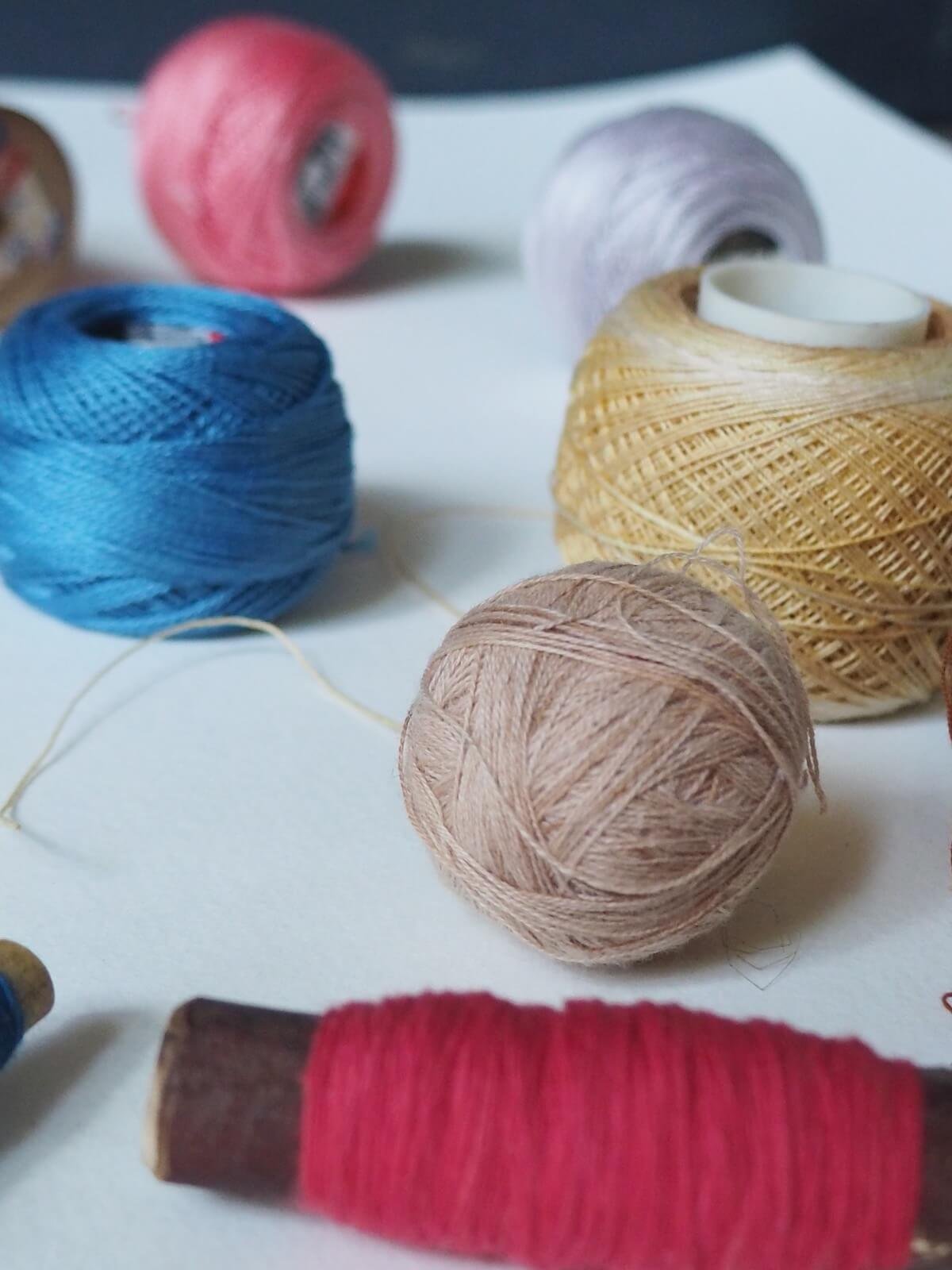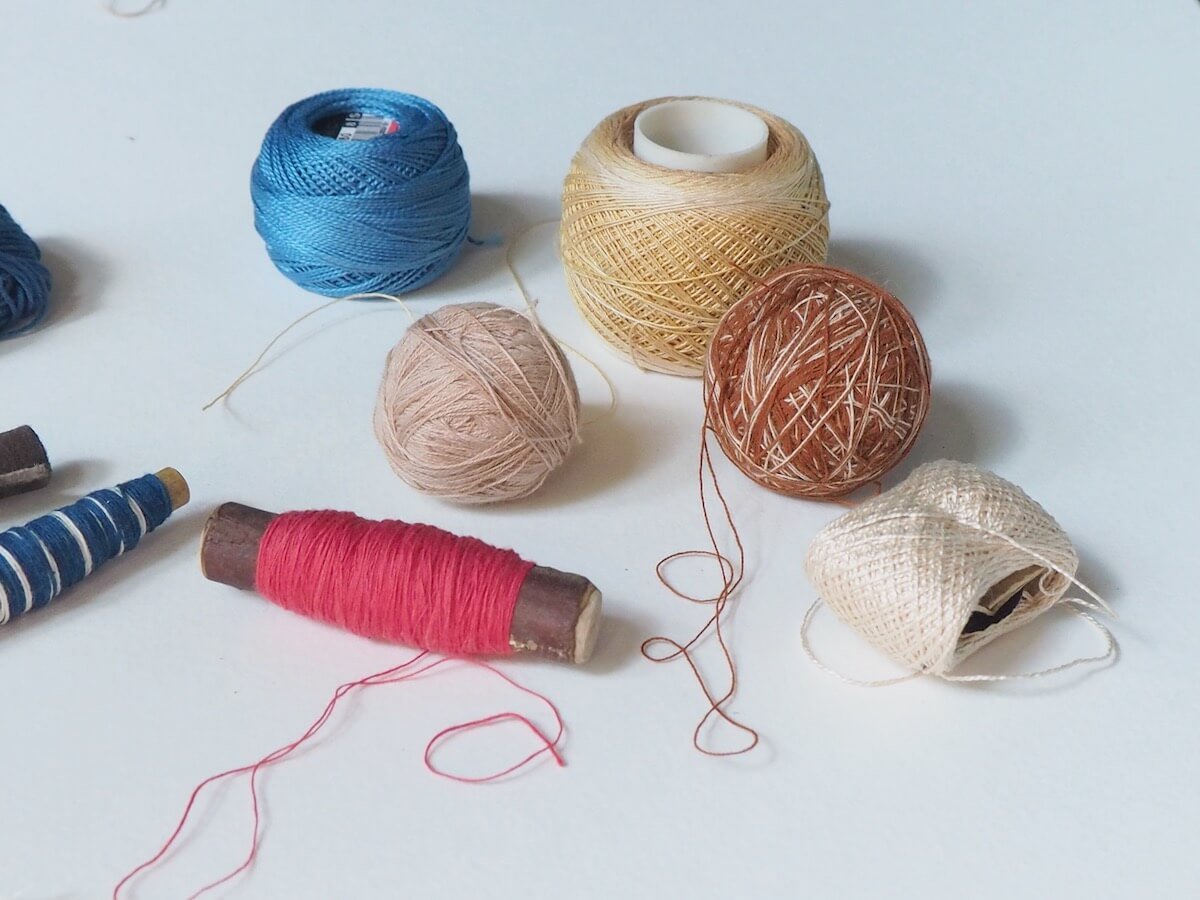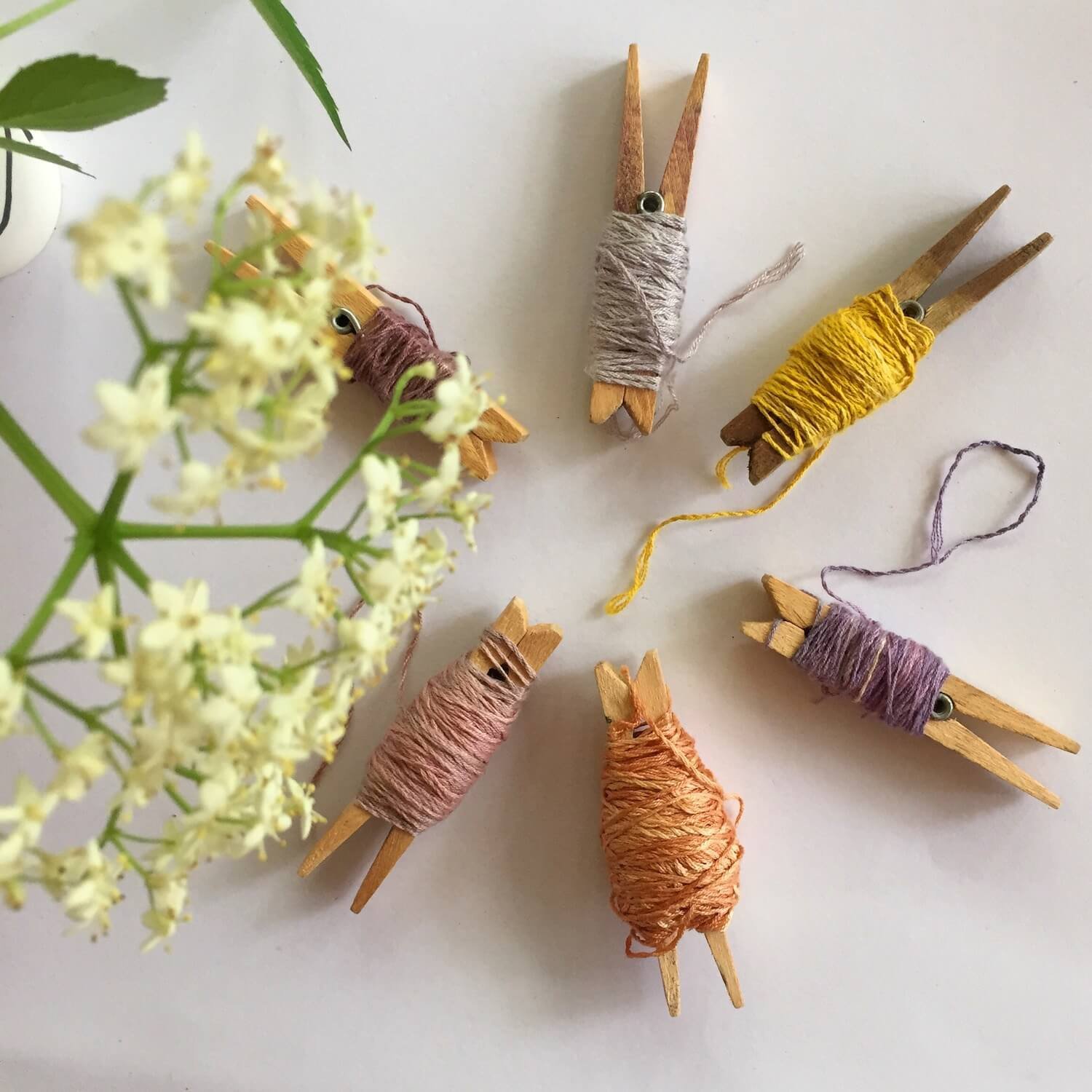What threads to use for slow stitching
I’m often asked what threads I use when I’m doing my slow stitching. While you can easily use one type of embroidery thread for all your projects, I suggest trying lots of different threads and seeing what you like best. I’m going to share my personal preferences and experiences, but I suggest you go off and see what you enjoy using.
I use a combination of different threads depending on the project, fabric, stitch or outcome I want. From regular 6-stranded embroidery thread to traditional Sashiko thread. From finest cotton to textured silk. From thread meant for loom weaving to thread meant for crochet. For me, it’s not so much about what the thread is but what I want it to look like and what fabric I’m using.
6-stranded embroidery thread, often called floss
You might already have some of this in your supplies cupboard, or someone has gifted you some. It’s readily available at pretty much every craft or sewing store, as well as second-hand shops, and boxes in cupboards.
It’s characterised by 6 strands that are wound together. You can use it as all 6 strands together, or divide it into 3, 2 or even individual strands. It’s fairly easy to divide into strands, if your length of thread isn’t too long; once the thread is too long you’ll likely find it tangles more easily.
Different strands mean different thicknesses of your stitch, and can create texture with your work. It would also depend on what stitch you’re creating, as some are definitely better with thinner threads, while others look more defined with thicker threads.
You can find this thread in pretty all the colours of every rainbow you’ve ever considered, and then some. It can be hard choosing the right colour, if you’re at a shop looking at the wall of colours. They do have colour codes, so keep that in mind if you want to continue with the same hue throughout your project.
Sashiko thread
Traditional Sashiko thread might look, at first, like regular embroidery thread / floss. But the major difference is that Sashiko thread is more twisted and doesn’t divide, but is rather one single strand. It doesn’t have a sheen like embroidery floss or specialised embroidery threads.
You can find some beautiful Sashiko threads at this Australian store, or if outside of Australia, check out some of my favourite hand stitching threads here. But you should be able to find it at most specialist quilting and sewing shops. I use
A few brands that I love are Olympus, and ItoRoku (which is a beautiful little shop in Kyoto where they hand dye their own threads).
Silk thread
I have been using silk thread for my stitching for about 12 or so years. I love it because of its sheen, the texture (it’s single stranded and doesn’t divide), and that it takes natural dyes so amazingly beautifully.
It works well for many stitching projects, as well as when I do my fine loom weaving. I get my silk thread from Beautiful Silks, and dye it myself.
Cotton thread
I use a combination of different cotton threads, depending on what I have, what I find at second-hand shops and what I stumble across on the internet. Basically I try everything from super fine loom weaving threads to thicker linens and cottons.
My suggestion with threads is to experiment with everything that I find. I love the different textures, thicknesses and details that come out of using different threads. Rather than having one flat surface, it’s a great way to add dimension to your work.
Perle 8 or 12 work well for giving a lovely sheen, and an added texure to Sashiko threads.
Also try a regular sewing machine thread as this can be very lovely built up in the same stitch, giving a different weight and dimension to your work. I’m currently playing with Superior Threads and Gutermann.
Some options & ideas
Consider using various thread types in one hue - it’s a great way to work within colour palettes but still change things up a bit.
You will need to use different needles with different thread. Some are much too thick to go through the eye of a tiny embroidery needle, others are fine enough and can therefore be used with a fine needle which means finer stitches. For this reason I always have lots of different needle options in my needle case, so that I can find the right one for each thread.
If you’re buying or using second-hands threads make sure to test the strength of it before you start your project. Old threads can weaken and break while you’re sewing or after your work is finished. To test the thread hold it between your hands and gently tug. You’re not deliberately trying to break the thread, but want to give it enough tension to see if it’s still strong enough.
If you’re new to slow stitching and using or experimenting with different threads, needles and stitches, as well as various techniques have a read of this post here, as well as this one on how to tie a quilter’s knot for hand stitching, and my free slow stitching online course will be a good start for you.

